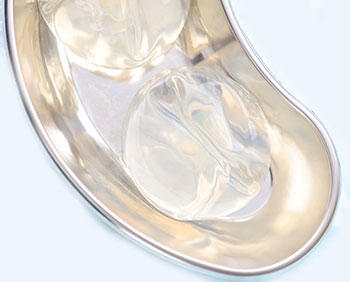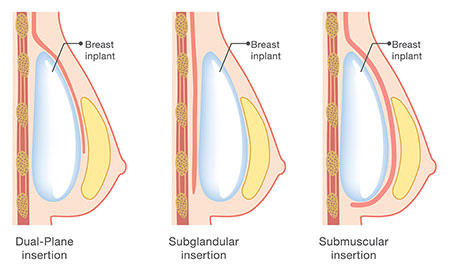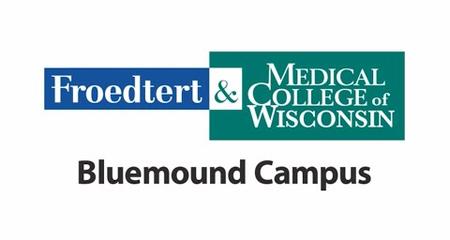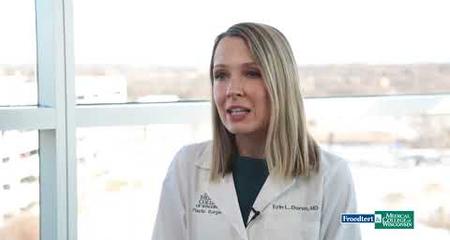Breast augmentation surgery (augmentation mammoplasty) enlarges the cup size, or volume, of the breast. It can also change the size or shape of your breast. The procedure involves the placement of a saline or silicone breast implant.
Some patients have the option of fat-transfer breast augmentation that uses your own fatty tissue instead of an implant.
Why Should You Have Breast Augmentation
Some women may want breast enlargement to improve their body image and self confidence. Or, one breast may be visibly larger than the other breast. In this case, breast augmentation can improve the symmetry of your breasts and change how your clothes fit.
Depending on your desired outcome, we may recommend combining breast augmentation with a breast lift — repositioning the breast and inserting an implant to give the breast more volume. The combined effect results in a fuller, higher and rounder appearance.
Preparing for Breast Augmentation Surgery

At your initial consultation, we sit down with you to go over how you would like your breasts to look after surgery and any concerns you may have. Your provider will do a breast exam to measure the size, shape and skin quality of your breasts. Pictures may be taken to help prepare for the procedure and to compare before and after. We'll discuss breast implant and breast lift options.
Breast implants contain silicone gel or saline (sterile salt water). Fat-transfer breast augmentation is an option if you are looking for a small increase in size and would like a more natural approach. We will discuss these different types of breast augmentation and breast implants and work with you to decide which one is best for you.
We will also take a health history, including the following:
- Family history of breast cancer and other related issues: Be sure to tell your doctor about the result of any mammograms you have had or if you have had any breast surgeries in the past.
- Any drugs you are taking: Include all prescription, over the counter, vitamins and herbal supplements. Pain relievers — ibuprofen, naproxen (Aleve) and aspirin — can make you more susceptible to bleeding. Supplements, such as garlic and fish oil, can also increase the risk of bleeding. Be sure to bring a list of EVERYTHING you take.
- Any allergies to medications
- Any bleeding issues: Include any blood-thinning medication or supplements that increase risk for bleeding on the medication and supplement list mentioned above.
Your doctor may also order lab tests, a chest X-ray, electrocardiogram and a mammogram.
Your care team will tell you when to stop eating and drinking before the procedure and if you need to take a shower with special soap to prevent infection. If you smoke or use nicotine products, talk to your doctor about when to stop using them before the procedure.
You will need to find someone to drive you home after the procedure. You will also need someone to help you at home as you will have restrictions on your activity level and how much you can lift.
What Happens During Breast Augmentation Surgery

The surgery takes between one and two hours. We will put an IV in your arm to provide fluids and medication. You will receive a drug that makes you sleepy — keeping you pain-free during the procedure. Once you are completely asleep, your doctor will insert a tube in your mouth to help you breathe. If you opted for fat-transfer breast augmentation, your surgeon will use liposuction to harvest fat cells.
Your surgeon makes small cuts to put in the implant. The cuts may be below your breast, around the nipple or in the underarm based on your treatment. Depending on your treatment plan, the implant is either placed between your skin and muscle tissue or placed under the muscles of your breasts. Your personal preference and your unique anatomy both factor into implant placement.
We may place a drainage tube around the implants. The tube allows any extra fluid to drain out and helps healing. We will remove the drain at your first follow-up visit.
Finally, your doctor will close your cut with stitches and cover your cut with clean bandages. If you are having both breasts enlarged, we will repeat the procedure on the other breast.
After Breast Augmentation Surgery
You will go to recovery for observation. You may receive medication for pain and nausea, and you'll remain on your IV until you can eat and drink. Once you are up and about, you can go home. In some cases, you may need to stay in the hospital depending on your condition.
Your care team will talk to you about wearing a special bra or bandage that provides extra support. This will also provide compression to reduce bleeding. There may be some bruising, swelling and tenderness for a few weeks.
The standard recovery time for breast augmentation is 4 weeks. You should not lift more than 10 pounds or do aerobic exercise during recovery. Most patients only take a few days off work.
Your care team will talk to you about how to care for your incisions and how to change your bandages. Always wash your hands before touching your bandages or wound area. Watch for signs of infection.
- Fever over 100.4°F (38°C)
- Chills
- Excessive swelling
- Redness
- Warmth around the wound
- Yellow, green or bloody discharge
- Foul smell coming from the wound
Call your doctor immediately if you experience any of these symptoms.
Your surgeon will need to remove any stitches and also check on your progress. If you had a drain put in, your doctor will remove that as well. We will schedule these appointments before you leave on the day of your surgery.
Risks of Breast Augmentation
As with any surgery, there are risks involved. Call your care team if you experience bleeding or any of the signs of infection listed above. Additionally:
- Scarring or wrinkled skin may form over the implant.
- Implants may make it harder to detect breast cancer. Make sure you let the mammogram technician know that you have implants prior to your mammogram. You may need to have other imaging done to check for breast tumors.
- Your breasts may feel different, and your nipples may have different levels of sensation or no sensation at all. These may be short-term or long-lasting changes.
- Implants require follow-up care to make sure they are not leaking.
- You could need another surgery have breasts implants adjusted, repaired or removed.
- Most patients are able to breastfeed after breast augmentation — as long as the nipple position isn't altered and there are no cuts through breast tissue. If you are combining breast augmentation with a breast lift, you may not be be able to breast feed. Make sure to let your surgeon know that you would like to breastfeed in the future, so that we can take that into account when recommending treatment options and implant placement.
Your doctor will discuss specific risks with you prior to your procedure.
Frequently Asked Questions
-
Are breast implants safe?
Breast implants are a prosthetic device FDA approved for use in cosmetic and reconstructive breast surgery. All implants come with some risk. Risks may include infection, capsular contracture, device failure, rupture, poor aesthetic result, and need for re-operation.
-
What are the long term effects of breast implants?
Breast implants are not meant to last a lifetime and require monitoring. The FDA recommends that silicone breast implant be monitored for rupture with imaging once the implants are 5 to 6 years old and every third year after.
The rupture rate per year is 1% for most breast implants. Common reasons why women have their breast implants removed or replaced are malposition, capsular contracture (hard scar tissue) or because they desire a different size.
-
How long do breast implants last?
Approximately 30% of women will have their breast implants removed or replaced within 10 years for one reason or another. However, many women keep their breast implants for longer if there are no problems.
-
Is there ongoing maintenance or regular checkups after breast augmentation?
The FDA recommends that silicone breast implant be monitored for rupture with MRI or ultrasound imaging once the implants are 5 to 6 years old and every third year after. All patients with breast implants should be monitored by their surgeon periodically as long as they have the implants in place.
-
Is there scarring after breast augmentation surgery?
There is minimal scarring after breast augmentation surgery. Your surgeon will usually make any scarring incisions in the crease under the breast where the breast meets the chest wall.
-
How much does breast augmentation surgery cost?
The cost varies by patient and depends on the type and length of the procedure. You will get an individual quote prior to your surgery.
-
Is breast augmentation covered by insurance?
Breast augmentation surgery is a cosmetic procedure and is not covered by insurance. It is elective, meaning that it is not medically required and is not the result of another condition (such as breast reconstruction after mastectomy to treat breast cancer). Please talk to your surgeon about any special circumstances.
Virtual Visits Are Available
Safe and convenient virtual visits by video let you get the care you need via a mobile device, tablet or computer wherever you are. We'll assess your condition and develop a treatment plan right away. To schedule a virtual visit, call 414-777-7700.
More to Explore





